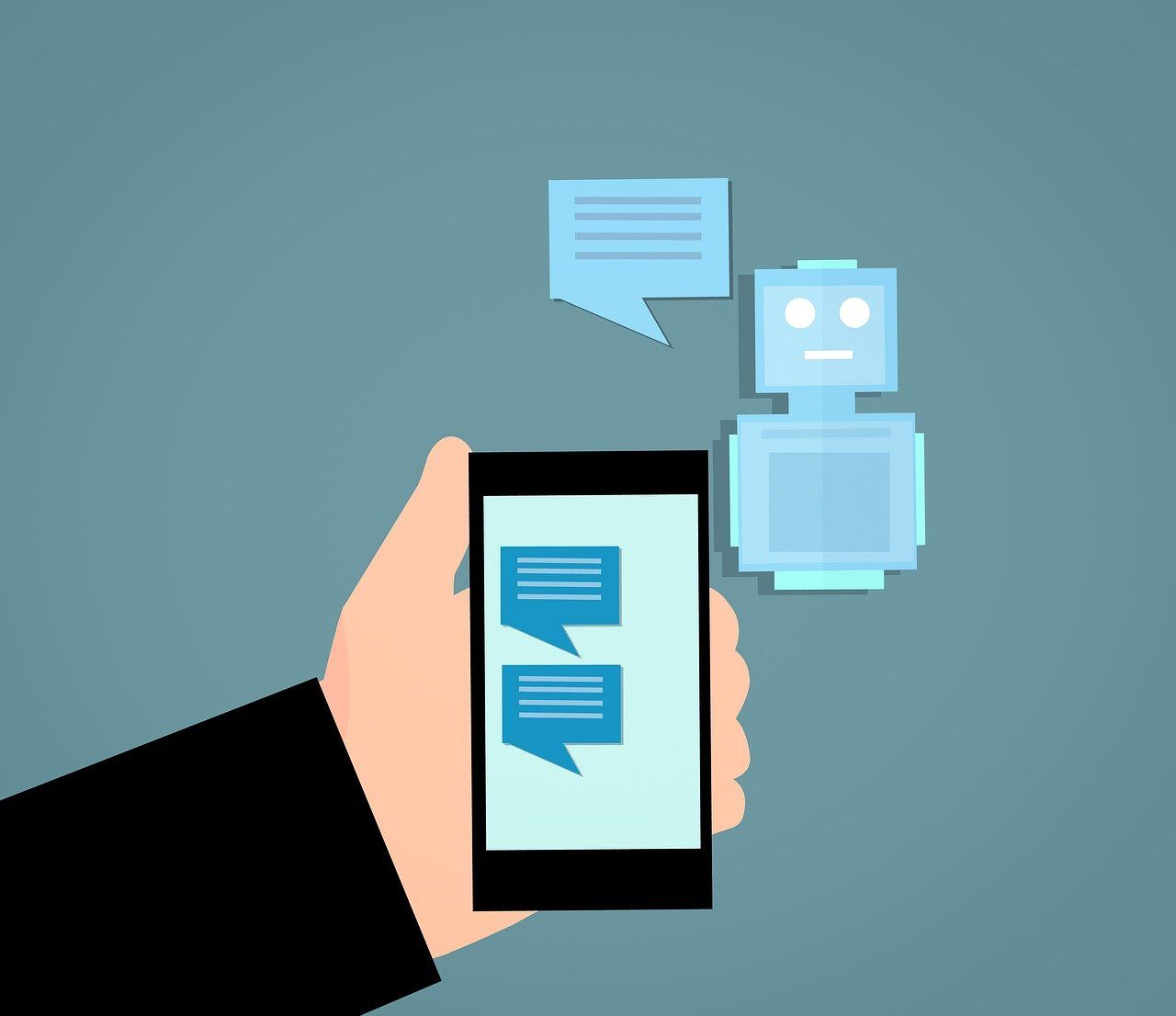The Impact of OpenAI on UX Designers: Redefining User Experience with AI
OpenAI has had a revolutionary impact on UX designers, revolutionising the way they approach their work and altering the future of user experience design.

OpenAI's language models, such as GPT-3, give designers strong tools for idea generation, prototyping, task automation, and content personalization. These features enable designers to improve their workflows, increase their creativity, and provide more engaging and personalised user experiences. However, as the area develops, ethical concerns emerge, forcing designers to handle issues of bias, privacy, and openness.
The impact of OpenAI emphasizes the symbiotic relationship between AI and human-centered design, allowing designers to harness technology while still playing an important part in creating meaningful and inclusive experiences.
In this blog, we will explore the ways in which OpenAI is impacting UX designers, revolutionizing their approaches, and redefining the landscape of user experience.
The 7 Different Ways How OpenAI affect UX designers
With the invent of the Open AI the UX designers are affected greatly and the ways are:
#1 AI Powered Design Assistance
AI-powered design help is changing the way designers work by giving them significant tools and skills to boost their creativity and efficiency. Designers can use AI to access intelligent assistants that produce design ideas, recommend layouts, and provide real-time feedback.
These assistants can analyse massive volumes of data, user preferences, and design principles in order to provide useful insights and recommendations. AI-powered design support also automates repetitive processes such as picture resizing, code snippet generation, and design adaptation for multiple devices, saving time and increasing productivity.
Designers may focus on more strategic and imaginative areas of their work by employing AI, while the technology handles monotonous jobs and provides vital assistance. The result is a synergy between human creativity and AI-powered assistance that enables designers to push boundaries and create exceptional user experiences.
#2 Natural Language Processing for User Research
Natural Language Processing (NLP) has transformed user research by giving sophisticated tools for analysing and deriving insights from text data supplied by users. NLP enables UX researchers to analyse and evaluate massive amounts of qualitative data, such as user comments, reviews, survey replies, and social media interactions, in a timely and efficient manner.
Researchers can employ NLP techniques to find patterns, attitudes, and themes in data, providing significant insights into user wants, preferences, and pain areas. Sentiment analysis enabled by NLP aids in gauging user sentiment and emotional responses, while topic modelling aids in discovering popular subjects and discussions. NLP also makes it possible to automate processes such as user feedback sorting and sentiment classification.
The integration of NLP in user research empowers UX designers and researchers to make data-driven decisions, improve user experiences, and create products that truly resonate with their target audience.
#3 Chatbots and Conversational Interfaces
Chatbots and conversational interfaces have transformed how organisations connect with their customers, making them a key focus for UX designers. Chatbots, which are powered by AI, replicate human-like discussions, offering immediate and personalised solutions to user enquiries.

They improve user engagement, streamline customer assistance, and allow for 24-hour availability. Conversational interfaces that are intuitive, user-friendly, and successful at interpreting user intent require the expertise of UX designers. They create conversational flows, define voice and tone, and guarantee that automated responses and human interactions flow smoothly.
The difficulty lies in developing chatbots that can understand context, manage complex queries, and provide seamless experiences. Chatbots are evolving with the growth of natural language processing and machine learning, offering even more complex conversational experiences in the future.
#4 Personalization and Recommendation Engines
AI-powered personalization and recommendation engines have revolutionised the way organisations provide personalised experiences to their customers. These engines can identify individual tastes, behaviour, and purchasing history by analysing massive volumes of data and providing personalised product recommendations, content ideas, and targeted offers. Personalization improves client satisfaction, engagement, and conversion rates. Recommendation engines use AI algorithms to find trends and similarities between consumers, allowing firms to effectively cross-sell and upsell. Furthermore, these engines are always learning and adapting, perfecting their recommendations over time. As a result, the user experience is highly personalised, catering to individual needs and preferences, creating loyalty and driving corporate success.
#5 Voice User Interfaces and Voice Assistants
AI-powered personalization and recommendation engines have revolutionised the way organisations provide personalised experiences to their customers. These engines can identify individual tastes, behaviour, and purchasing history by analysing massive volumes of data and providing personalised product recommendations, content ideas, and targeted offers.
Personalization improves client satisfaction, engagement, and conversion rates. Recommendation engines use AI algorithms to find trends and similarities between consumers, allowing firms to effectively cross-sell and upsell. Furthermore, these engines are always learning and adapting, perfecting their recommendations over time.
As a result, the user experience is highly personalised, catering to individual needs and preferences, creating loyalty and driving corporate success.
#6 Design Automation
By reducing repetitive procedures and increasing efficiency, design automation has revolutionised the area of UX design. Designers may automate numerous portions of the design process with the use of AI-powered technologies, such as producing UI layouts, resizing pictures, and adjusting designs for multiple screen sizes.
This automation not only saves time and resources, but it also frees up designers to concentrate on more strategic and creative parts of their job. Designers can iterate more quickly, test many design variations, and obtain user feedback in a more effective manner by automating common operations.
Design automation allows designers to work at scale while maintaining consistency across platforms and providing high-quality user experiences.
#7 Ethical Considerations
In the impact of OpenAI on UX designers, ethical considerations are crucial. Designers must handle concerns such as prejudice, privacy, and openness as they use AI-powered tools and technology. AI models might unintentionally perpetuate biases in the data they are trained on, resulting in discriminating user experiences.

As user data is processed and used by AI systems, privacy problems arise. Transparency is critical in ensuring that people understand when AI is utilised and how their data is used. To respect ethical standards and create confidence in the design process, UX designers must adopt ethical frameworks, actively minimise biases, prioritise user permission and data protection, and provide transparent explanations of AI-driven features.
How to Make Designs with OpenAI
Here are some of the steps by which a UX designer can design with OpenAI:
- Understand AI capabilities: Familiarize yourself with the various AI technologies and their potential applications in design. This includes areas such as machine learning, computer vision, natural language processing, and generative algorithms.
- Identify design challenges: Determine specific design challenges or areas where AI can provide value. This could range from automating repetitive tasks to analyzing large datasets, generating design variations, or enhancing user experiences.
- Data collection and preprocessing: Gather relevant data that can be used to train AI models. This could include design assets, user feedback, market trends, or other relevant data sources. Clean and preprocess the data to ensure its quality and suitability for AI algorithms.
- Choose appropriate AI tools: Select AI tools or platforms that align with your design goals and expertise. These could include AI-powered design software, generative design tools, or custom AI development frameworks.
- Train AI models: If necessary, train AI models using the collected and preprocessed data. This involves selecting appropriate algorithms, setting up training parameters, and iteratively refining the models based on feedback and evaluation.

6. Collaborate with AI: Incorporate AI into your design process as a collaborator or assistant. Utilize AI tools to generate design suggestions, explore variations, or provide real-time feedback during the design iteration process.
7. Iterate and refine: Continuously iterate on the design with the help of AI insights and feedback. Analyze the outputs generated by AI algorithms and integrate them into your design decisions. This iterative process helps refine and enhance the final design outcomes.
8. Consider ethical implications: Be mindful of the ethical considerations when using AI in design. Address issues related to bias, privacy, transparency, and fairness to ensure responsible and inclusive design practices.
9. Test and evaluate: Validate the AI-enhanced design solutions through user testing and evaluation. Collect feedback from users and stakeholders to assess the effectiveness and impact of AI on the design outcomes.
10. Learn and adapt: Embrace a continuous learning mindset to stay updated with advancements in AI and design. Explore new AI techniques, research findings, and case studies to continually evolve your design approach.
Conclusion
In conclusion, the impact of OpenAI on UX designers has been profound, revolutionizing the way they approach and execute their work. OpenAI's language models have provided designers with powerful tools for generating ideas, prototyping, automating tasks, and personalizing content.
This has led to streamlined workflows, enhanced creativity, and the ability to deliver more engaging and personalized user experiences. However, it is important for designers to balance the use of AI tools with human-centered design principles, addressing ethical considerations and ensuring that the user remains at the center of the design process.
OpenAI continues to shape the future of UX design, empowering designers to create meaningful and impactful experiences in the ever-evolving digital landscape.
How much is a great User Experience worth to you?
Browsee helps you understand your user's behaviour on your site. It's the next best thing to talking to them.


